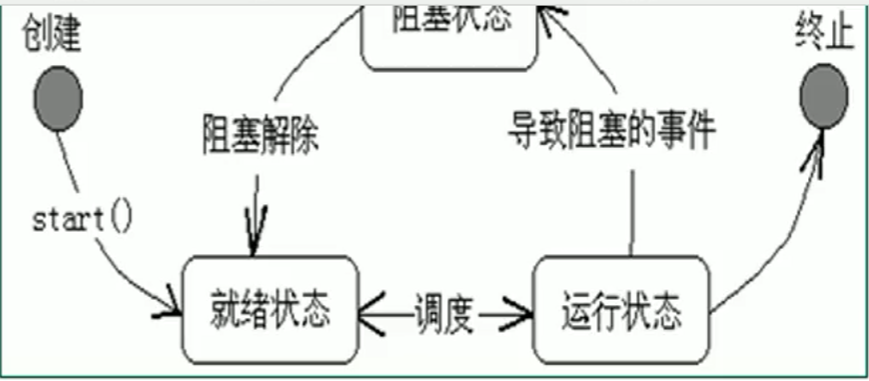多线程(12)线程池
一:多线程

当线程处于就绪状态的时候(new Thread().start();),不能立马执行(立马执行run()方法),而是要等待cpu的调度,所以我们所写得多线程不是我们所能控制的。
a>.currentThread():静态方法获取当前线程对象 : Thread.currentThread().getName();
b>.getPriority() :获取线程优先级;
一:运行状态的三个去向:
①进入到阻塞状态
②进入到终止状态
③进入到就绪状态:就是用yield 后进入到就绪状态
二:创建,就绪,运行,阻塞,终止
创建(new Thread ) , 就绪(new Thread.start()),运行(执行run方法),终止
当我们执行new Thread.start() 的方法时候,进入到就绪状态, 这个时候需要等待cpu随机调度,
当我们执行run方法的时候, 执行sleep,或者wait方法,线程进入到阻塞状态
当我们再次通过notify 或者notifyall唤醒后,线程再次进入到就绪状态,等待cpu的随机调度。
一:使用线程池
①背景:经常创建和销毁,使用量特别大的资源,比如并发情况下的线程,对性能影响很大。
②思路:提前创建好多个线程,放入线程池中,使用时直接获取,使用完放回池中。
③好处:提高响应速度(减少了创建新线程的时间);降低资源消耗(重复利用线程池中线程,不需要每次都创建);便于管理线程
④jdk5.0起提供了线程池相关API:ExecutorService和Executors
A:ExecutorService:真正的线程池接口。常见子类ThreadPoolExecutor
void execute(Runnable command):执行任务,没有返回值,一般用来执行Runnable
Future submit(Callable task):执行任务,有返回值,一般又来执行Callable
void shutdown():关闭连接池
B:Executors :工具类,线程池的工厂类,用于创建并返回不同类型的线程池。
public class Tread11 {
public static void main(String[] args) {
//创建服务,创建线程池
//newFixedThreadPool 桉树为线程池大小
ExecutorService executorService= Executors.newFixedThreadPool(10);
//执行
executorService.execute(new MyThread());
executorService.execute(new MyThread());
executorService.execute(new MyThread());
//关闭
executorService.shutdown();
}
}
class MyThread implements Runnable{
@Override
public void run() {
System.out.println(Thread.currentThread().getName());
}
}
pool-1-thread-2
pool-1-thread-1
pool-1-thread-3



 浙公网安备 33010602011771号
浙公网安备 33010602011771号